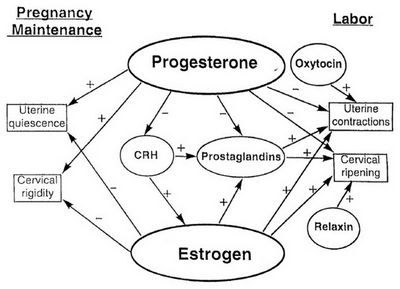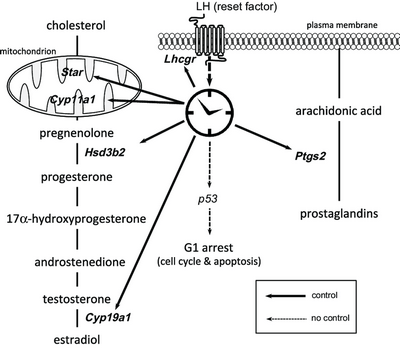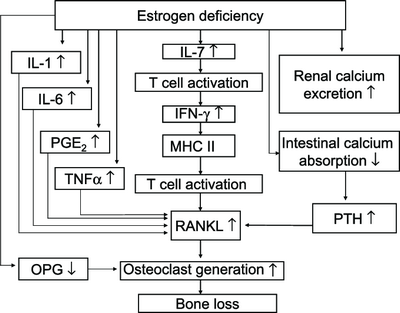Estrogens and Prostaglandins
The prostaglandins, a group of lipid molecules known as prostaglandins with varying hormone-like actions in both animals and humans, are a class of steroid hormones having multiple hormone-like activities.

Prostaglandins have recently been discovered in all tissues in both animals and humans.
They are found enzymatically in the fatty acid arachidonic fat and are known to act as inhibitors of fatty acid transport into cells. Prostaglandin E2 is the primary hormone secreted by the liver and pancreas in response to the activation of fatty acids (lipids) in the body. The other two prostaglandin hormones, prostaglandin D2 and prostaglandin F2 are released by other tissues. Prostaglandin E2 is the most potent of the three hormone and its effects on fatty tissue can be more pronounced than Dihydrotestosterone (DHT), which is known to be a major cause of baldness.
Prostaglandin E2 activates the synthesis of lipid-soluble diphospholipids, which are then transported to different tissues, particularly the skin, liver, kidney, and brain. Prostaglandin E2 can also activate the synthesis of prostaglandin-derived enzymes such as carnitine palmitoyltransferase, cholesteryl ester base, fatty acid amide hydrolase, phospholipase C-translocase, and lipoxygenase, as well as enzyme systems that convert prostaglandin-derived phospholipids into prostaglandin-E2.

Prostaglandin E2 has been shown to affect the activity of several of the enzymes responsible for the metabolism of the lipids.
Prostaglandin E2 has been shown to have an important role in the regulation of blood pressure and cardiac output, but not necessarily in the regulation of arterial wall integrity and coronary blood flow. It has also been suggested that prostaglandin E2 may have a role in inflammatory responses in the central nervous system, heart failure, and in the pathophysiology of diabetes. The role of prostaglandin E2 in the control of insulin secretion has also been studied.
Prostaglandin E2 has been shown to have a direct effect on the cardiovascular system, acting on the sympathetic nervous system and the heart by producing vasodilatation and altering the vasoconstrictor mechanisms. It may also affect the immune system by inhibiting the activation of T-cells. It has been suggested that the increased production of prostaglandin E2 in blood vessels may contribute to the development of atherosclerosis.
Prostaglandin E2 can also regulate cholesterol levels in the blood, as it has been reported that prostaglandin E2 increases HDL cholesterol, which decreases LDL cholesterol.

Other effects of prostaglandin E2 include the regulation of angiotensin II receptor expression in the skin and kidney and the production of cholesterol lowering lipoproteins. Prostaglandin E2 has been linked to the regulation of the blood pressure, thereby inhibiting angiotensin II and reducing the release of the inflammatory cytokines. It may also stimulate the production of nitric oxide.
Prostaglandin E2 may also inhibit the release of inflammatory mediators such as interleukin’s A and B1 by the monocyte-derived macrophages by interacting with their receptors. The release of the inflammatory mediators may result in inflammation, which in turn, may trigger the release of histamine.
Prostaglandin E2 is a naturally occurring hormone produced by the adipose tissues of the body, but this hormone is rapidly and irreversibly metabolized when these tissues are exposed to exogenous substances. Prostaglandin E2 levels are known to be elevated after exposure to physical exercise, excessive fat intake, and a sedentary lifestyle.
Estrogen, another fat-related hormone, may also produce prostaglandin E2 in the body.

Estrogen is known to be produced by the ovary in conjunction with progesterone. Progestogen is also produced by the ovary. Proestrogens are known to affect the development and function of many tissue types in the female reproductive system.
Estrogen has been found to alter the function of the immune system and inhibit the activity of the body’s natural killer cells, thus increasing the risk of breast cancer. It has also been associated with increased levels of tumor necrosis factor in human breast cancer cells and increased levels of prostaglandin E2 in the blood.
Prostaglandin E2 is one of the strongest and most well-known contributors of estrogen. Estrogen and prostaglandins have also been linked to breast cancer risk. Prostaglandin E2 has been implicated in the development of atherosclerosis, cardiovascular disease, and several forms of cancer, including lung and prostate cancers, as well as in the pathophysiology of diabetes.